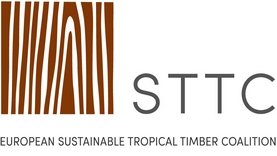On board the bus to sustainable tropical timber

The 2019 Sustainable Tropical Timber Coalition Conference, titled Establishing Pathways to Verified Sustainable Tropical Timber, reinforced the reputation of the annual event for lively, insightful discussion on the tropical timber trade. It was a true forum, with delegate input as integral a part of proceedings as presentations.
It didn’t produce 100% consensus on its theme of how best to align different legality and sustainability verification schemes and initiatives to drive the environmental performance of timber and forestry sectors. Ultimately, however, there was broad agreement that the various initiatives are headed for the same destination – maintenance of tropical forests and their ecological, social and economic benefits and a sustainable international tropical timber trade. So, it was broadly concluded, increased coordination and cooperation are key.
The November Conference took place in Berlin the day before the International Hardwood Conference in the same venue, enabling delegates to attend both. It attracted an audience of approximately 120 drawn from across Europe and beyond, including timber suppliers, importers, trade federations, government agencies and NGOs. Co-hosts were STTC founder IDH, the Sustainable Trade Initiative, the German Timber Trade Federation GD Holz, and STTC member the City of Berlin.
A focal point was the release of the new report from IDH and the STTC, ‘Unlocking Sustainable Tropical Timber Market Growth Through Data’. Undertaken jointly by forest and timber sustainability advisors Probos and the Global Timber Forum, the publication is set to be annual. Its rationale, said Probos’s Mark van Benthem, is that current, accurate trade data is key to informing market development strategy.
The report found continuing wide variance in verified sustainable primary tropical timber products market share among Europe’s seven leading consumer countries; from 67.5% in the Netherlands, to 5% in Spain. The average lies between 25% and 32%, rising to 40% if FLEGT-licensed timber from Indonesia is taken into account.
Recommendations included greater multi-stakeholder collaboration to mainstream use of sustainable tropical timber and incentivize uptake of sustainable forest management in tropical countries [see separate report].
Mr van Benthem also presented preliminary findings from the STTC’s survey of importers in Europe’s five biggest consumer countries on action and support needed to promote verified sustainable tropical timber [see separate report].
Among speakers addressing the subject ‘Navigating the journey from EU Timber Regulation (EUTR) through to verified sustainable’, IDH Program Manager Nienke Sleurink looked at development of Verified Sourcing Area methodology in Mato Grosso in Brazil. This covered the range of forest area commodities. Pilot studies had been conducted for beef and were now being examined for timber, she said. She also addressed benchmarking of the Brazilian Sisflora legality and sustainability scheme with the requirements of the EU Timber Regulation (EUTR), FSC and PEFC. This showed that it satisfied many of them.
UK Timber Trade Federation Managing Director David Hopkins took the topic ‘FLEGT and Certification – Achieving Mutual Benefit’. He argued that with just 6.5% of tropical forest certified so far, complementary strategies were needed to drive progress to verified legal and sustainable forest management and timber production. He contended that FLEGT could be one, with its Voluntary Partnership Agreement scheme for suppliers meeting many criteria of certification and acting as a step towards it. “The key is to get suppliers on the bus to sustainability,” he said. “Then we can improve the bus as we go along.”
Jesse Kuijper of the Borneo Initiative, however, argued that FSC certification was ultimately the ‘bus’ the industry should board, given its comprehensive incorporation of social, environmental and economic aspects of sustainability. The multi-stakeholder Borneo Initiative had demonstrated this, he argued, leading to 3 million ha of Indonesian forest achieving FSC certification and 2 million ha the FSC Controlled Wood standard, with a target of 8 million ha for each by 2030.
Eric de Munck, of the Netherlands Timber Trade Association and the sector’s new Centrum Hout market development body, described what pan-industry cooperation in his country was achieving in verified sustainable tropical timber promotion, including through use of life cycle assessment.
These and other presentations inspired wide ranging delegate debate and inquiry. There was also a rolling programme of conversation sessions. Here speakers introduced subjects, from the impact of certification on landscapes in Indonesia and Peru, to market trends from the perspective of a concession holder and international trader. Conference participants then had the opportunity to explore topics further.
Round table discussions, led by inspirational moderator Peter Woodward, also generated ideas for the sector to grow sustainable tropical timber market share. These included:
- Working more closely on deforestation free supply chains with other forest area commodity industries
- Recruiting a tropical timber champion to lobby for the multiple values of the industry
- Forming an action plan to improve the image of tropical timber
- Stronger communication of the carbon benefits of using timber
- Creating an NGO coalition within the STTC
- Targeting specific specifier/end user audiences, based on the model of the Centrum Hout/Netherlands industry Hout in de GWW tropical timber marine engineering initiative
- Backing a global reforestation programme.
In his keynote, meteorologist Reinier van den Berg of Meteo Group stressed the urgency of climate change and that the ‘number one’ tool for mitigating it was forest protection, reforestation and substitution of energy intensive materials with wood. The clock could be turned back, he said, but in terms of hitting targets on global warming it already stood at five past midnight.
Click here for the full conference report and here for the presentations STTC conference.

Photo Mark van Benthem, Probos










